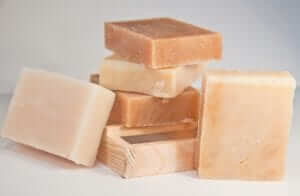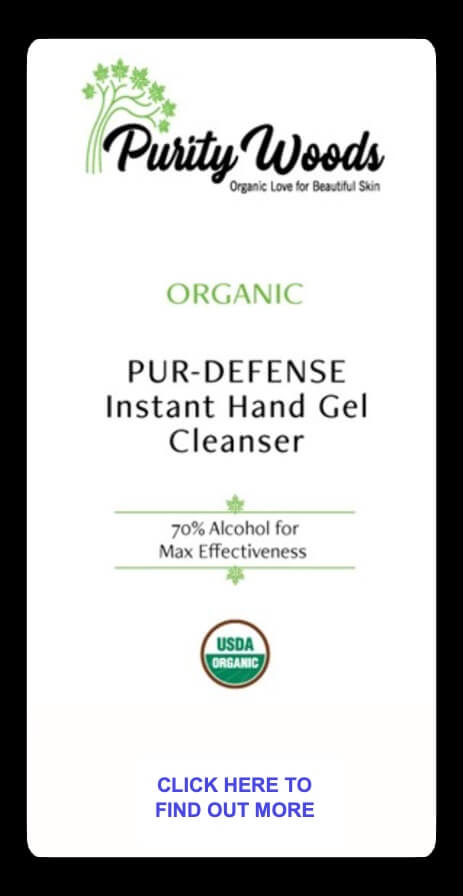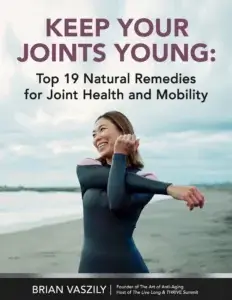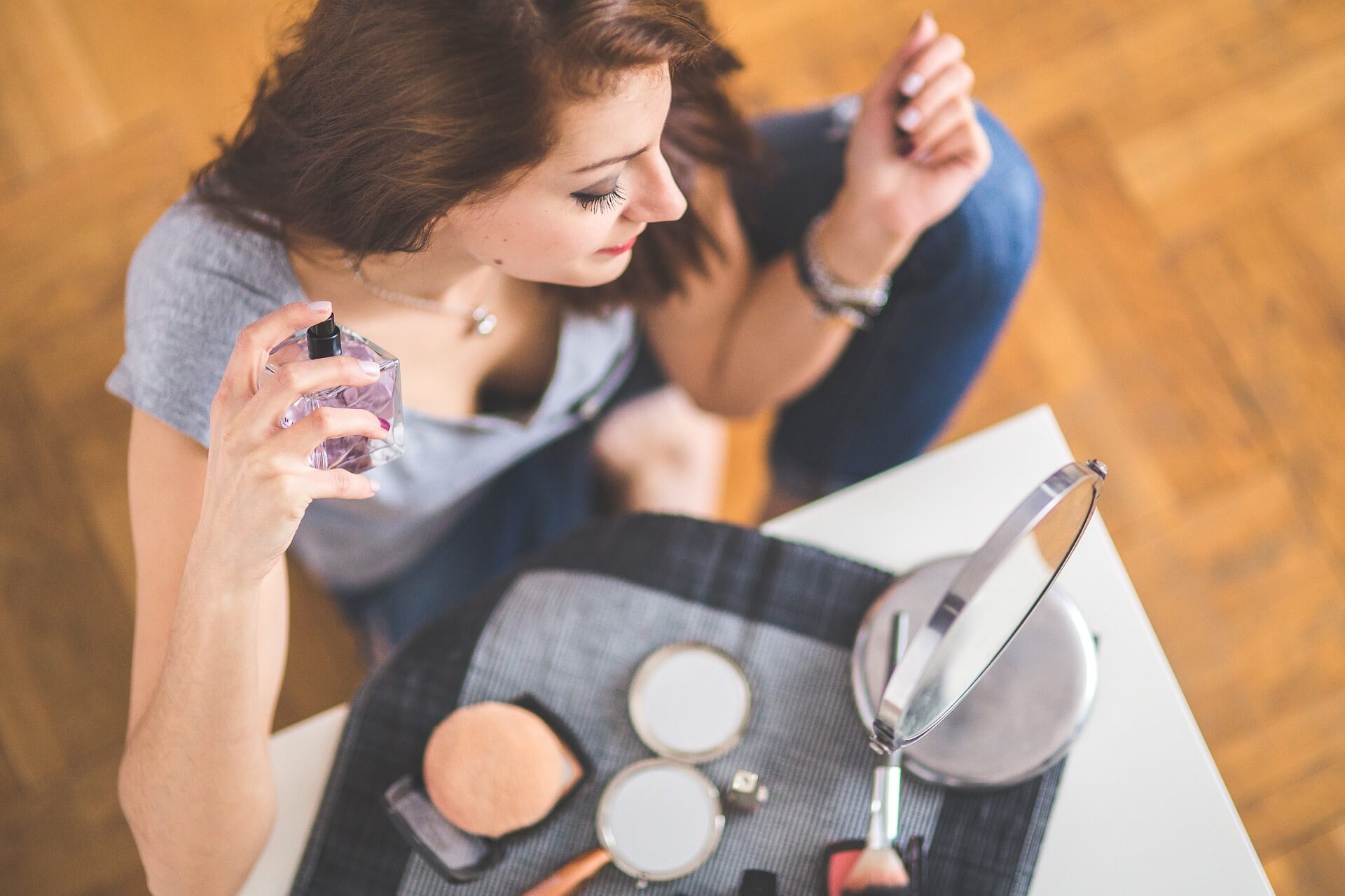Many people are already aware of the toxic chemicals found all around us like environmental pollution or cigarette smoke.
However, there are many little-known dangers lurking inside many cosmetics and personal care products, and perhaps the most widespread of these is “fragrance.”
Look closely at labels and you’ll see that the ingredient called “fragrance,” sometimes also called “parfum” or “scent,” is found in a wide array of products such as perfume, face creams, common hand sanitizer, and hair products (and even many household cleaners).
These “fragrances” added to so many products today can contain MANY harsh and dangerous chemicals.
And they are allowed into our products due to lax loopholes in American cosmetic regulation.
A Brief History of Chemical Fragrances
It was largely in the 1970’s and 1980’s that fragrances in products were switched to industrial, chemical formulations.
Before this, fragrances were largely made with many natural ingredients like flowers and herbs.

(SIDENOTE: These chemical fragrances are in many products, including, of course, the actual perfume that people spray on to smell good. In fact, today up to 95% of ingredients in perfumes are entirely synthetic, according to the Committee of Science and Technology. If you’ve ever spilled perfume and smelled how harsh it is at a high concentration, this will come as no surprise.)
The chemical ingredients in the ingredient called fragrance go largely unregulated in the US, particularly compared to Europe.
The Guardian reported in 2019 that the European Union has banned or restricted more than 1,300 chemicals in cosmetics.
Meanwhile, the number restricted chemicals in US cosmetics is just 11 (!) That’s less than 1% of the number the EU control.
Further, as of February 2020 the EU is considering adding more regulation to control the labeling of allergens on fragrance packaging.
There have certainly been attempts to investigate the toxicity of fragrance ingredients in America, but these have not always been subject to thorough follow-through.
For example: In 1986 the National Academy of Sciences recommended that Congress test fragrances (along with a host of other products) for neurotoxicity. That study has yet to be published (in fact, even the original report suggesting the study is unavailable online – only as a paper book in libraries. How’s that for availability of information?).
Though we’re still waiting on that 1986 study, others have been done.
In 1991, the EPA tested fragrances for chemicals and found a long list of toxic ingredients – these include acetone, benzaldehyde, benzyl acetate, benzyl alcohol, camphor, ethanol, ethyl acetate, limonene, linalool, methylene chloride as well as phthalates, stearates, and parabens.
Though it’s been made clear that toxic chemicals are present in fragrances, they have largely been ignored as far as regulation. This is in large part due to a clever loophole that lets cosmetic companies bypass regulations about listing ingredients.
The Problem with “Fragrance” (a.k.a. “Parfum”)
“Fragrance” (also known by other generic names like “aroma” or “parfum”) is listed on the back of nearly every bottle of fragranced product, but doesn’t actually mean much of anything (except perhaps for BEWARE).
Because it’s a catch-all term for whatever cocktail of chemicals the manufacturers use to make the scents in that particular product.
Even cosmetics we don’t think of as having a strong scent — like certain makeups, soaps, and typical hand sanitizers — often contain chemicals to mask harsher scents from other ingredients.
 Parfum is effectively a loophole that allows cosmetics manufacturers to bypass laws requiring them to list their ingredients.
Parfum is effectively a loophole that allows cosmetics manufacturers to bypass laws requiring them to list their ingredients.
Here’s how it works:
In general, no cosmetic or personal care product requires any FDA approval before going to market. Instead, the industry is essentially asked to regulate itself for safety.
One thing that is required on product labels, though, is what ingredients are contained in the product.
However, an exception here, due to the Fair Packaging and Labeling Act, are the ingredients listed as “Fragrance” (or “Scent” or “Parfum”).
This legislation states that the companies that concoct these fragrances from many thousands of different possible chemical combinations are entitled to protect it as a “trade secret.”
This legislation protects business interests, in other words, but it also provides a big loophole for companies to effectively put whatever they want into products, call it “fragrance” or “parfum,” and not have to list those ingredients on the label.
What Toxic Chemicals are Found in Fragrances?
While the United States government has allowed toxic chemicals to slide by unregulated in fragrances, there have been studies from other sources identifying the chemical ingredients of fragrances and describing their risks.
In May 2010, for example, the Environmental Working Group (EWG) and the Campaign for Safe Cosmetics published a report on the toxic chemicals found specifically in perfume. They found that the average perfume contains 14 secret, unreported ingredients, with many containing more.
For example, American Eagle’s Seventy Seven perfume contains a whopping 24 unregulated ingredients. They also report that of the secret chemicals found in fragrances, 66% of them have never been assessed for safety at all.
While it would take a much longer post than this one to list every one of the toxic ingredients identified in this report and the 1991 EPA report, here are just a few examples of the chemicals found in fragrances and their risks to humans:
 Phthalates: These are a class of organic salt that have various harmful effects. For example, diethyl phthalate is found in 97% of Americans and is linked to sperm damage and poor reproductive outcomes in humans. Phthalate exposure is also linked to lower IQ in children whose mothers were exposed during pregnancy.
Phthalates: These are a class of organic salt that have various harmful effects. For example, diethyl phthalate is found in 97% of Americans and is linked to sperm damage and poor reproductive outcomes in humans. Phthalate exposure is also linked to lower IQ in children whose mothers were exposed during pregnancy.- Musk ketone: This is a synthetic ingredient that concentrates in human fat tissue and breast milk. It is also a skin irritant and interferes with the function of hormones in humans.
- Ethyl acetate: This chemical can cause eye and respiratory irritation and is so strong that it is used as a powerful solvent in organic chemistry labs, as well as to dissolve paints, varnishes, and lacquers.
- Styrene: This organic compound has an especially sweet scent at lower concentrations, so it’s very commonly used in fragrances. However, it has been determined to increase the risk of cancer in humans.
- Methylene chloride: This chemical was used for many years as industrial paint thinner. As of November 2019, this substance is actually banned by the EPA for use as paint thinner due to its highly toxic effects. However, this chemical is not banned by the FDA and is still used in food processing and can be found hiding as a secret ingredient in fragrances.
What You Can Now Do to Protect Yourself
While other areas of protecting and improving your immune system and overall health can be challenging, the answer here is pretty simple:
To avoid the toxic ingredients found in perfumes, cosmetics, and other personal care products that contain “fragrance” as an ingredient, try not to use them.
This is especially important because “fragrance” is only one of many potentially harmful chemicals found in so many typical cosmetics and personal care products.
Now, even a few years ago with many cosmetics and personal care products, it may have come down to a choice between using typical products containing synthetic and potentially toxic ingredients or nothing at all.
Today, though, an increasing number of USDA Certified Organic cosmetics and personal care products are available.
In the U.S., this strict verification — which is completely independent of the company and its manufacturers that make a given product — ensures the products and their source ingredients are free of any toxic ingredients.
Here are three key steps to ensure the products you use are safe for you and your loved ones:
1) Thoroughly check the ingredient labels of cosmetics and personal care products
Most of us know to at least glance at the label of a product we’re buying, but because of the whole “fragrance” regulation loophole, it’s extra important to check labels thoroughly when purchasing personal care or household products. Look for any generic-looking ingredients like “parfum,” “fragrance,” “scent,” or similar, and avoid products that contain them, since these companies are not fully disclosing their ingredients.
2) Do your research
As noted, because cosmetics and personal care products are largely unregulated in the U.S., there are many other ingredients beyond “fragrance” you’ll want to avoid. Many known endocrine-disrupting and carcinogenic ingredients can be found in a wide variety of personal care products, for example. If you have doubt about any ingredient on a label, today you can easily Google search it to find out if it may pose risks. And stay tuned to The Art of Anti-Aging’s free newsletter here, because we provide research-based insights and updates on this topic and others to help you look and feel your best, avoid and overcome disease, and live long doing it (right now when you sign up for our free newsletter you’re getting The 30 Top Herbs & Botanical for Anti-Aging and Longevity report FREE.)
3) Opt for USDA Certified Organic products (or the equivalent in other countries)
As noted above, make sure whatever you purchase is USDA Certified Organic (or the independently verified equivalent, such as in other countries.) MANY brands today loosely make claims using words like “organic” and “all-natural” and “wild-crafted” in their marketing because they know these are “buzz words.” Meanwhile, though, they may contain a single “organic” ingredient in their product amidst a sea of synthetic and toxic ingredients! (Be sure to read Why You Should BEWARE of “Organic” Cosmetics here). Be certain to see the official USDA Certified Organic designation versus the company calling its own products “organic,” etc.
To conclude, remember that whatever you apply to your skin is really food you are feeding your body.
Ingredients in cosmetics are designed to penetrate — and other toxic chemicals are often added to help them penetrate faster and deeper — and so many can and do enter your bloodstream and the organs throughout your body.
You already know that eating healthy is amongst the most important things you can do for your health, immunity, and longevity — and this certainly applies to the ingredients you feed your body through your skin, too.
*****
Pur-Defense Provides You the Protection of 70% Ethyl Alcohol WITHOUT the “Fragrance” and Other Toxic Chemicals in Typical Hand Sanitizers…
 Typical hand sanitizers are LOADED with synthetic and toxic chemicals you don’t want to feed your skin and body, including “fragrance.”
Typical hand sanitizers are LOADED with synthetic and toxic chemicals you don’t want to feed your skin and body, including “fragrance.”
The USDA Certified Organic Pur-Defense provides you the protection of 70% ethyl alcohol recommended by the CDC and other major health organizations.
And because it’s USDA Certified Organic, it’s independently verified FREE of GMOs, pesticides, AND all the synthetic and toxic chemicals in typical hand sanitizers.
Furthermore, while the relative few other USDA Certified Organic hand sanitizers can cost upwards of $9 an ounce, Pur-Defense is considerably lower…
Plus, you are getting Pur-Defense with a very special discount and FREE U.S. Shipping today!
Head here now to find out more about Pur-Defense and get today’s special discount



So can I assume that all Perfume and “cologne” is all harmful chemicals?
There are select perfumes and colognes out there made from essences and essential oils and not the harmful stuff.
What about “fragrance free” & “hypoallergenic” on lotions, soaps & makeup?? Is this true or another scam?? Do they still contain phthalates & other bad for me ingredients??
“Fragrance free” may mean the product contains no fragrance, but it still could contain many other types of chemicals you don’t want. “Hypoallergenic” is not a legal term at all, it is a marketing term. It SHOULD mean at least that the product contains less chemicals likely to trigger allergic reactions, but it could actually mean anything or nothing at all beyond “buy this.” This is why, whether choosing deodorant or makeup or sanitizer or anything being fed to the skin, look for USDA Certified Organic products, or equivalent independent verifications such as in other countries (and some states and other bodies have similar strict programs and verifications), because right now it is the only way to ensure organic / free of toxins etc.
My family always say that I am wasting my time here at web, but I know I am getting know-how all the time by reading such fastidious content.